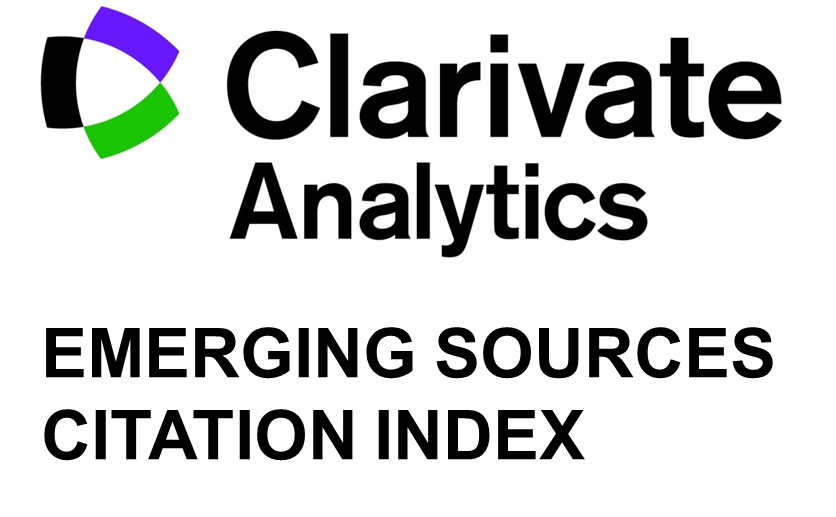M. V. Kizimirov, E. V. Chernyaev. Analysis of the Factors of Spatial Placement of Logistics Facilities
https://doi.org/10.15507/2413-1407.033.202501.138-151
EDN: https://elibrary.ru/whxdle
УДК / UDC 658.7
Annotation
Introduction. The topic of the study is relevant because it examines key aspects of society and the economy, the understanding of which helps to make informed decisions about the location of logistics facilities and contributes to the development of an effective and sustainable logistics system. The aim of the paper is to examine the spatial distribution of logistics facilities, to identify the factors that influence their location and to present the methodological foundations that determine such a distribution.
Materials and Methods. The research analyzed scientific publications on the subject under consideration, as well as took into account the practical experience of carrying out research work carried out within the framework of the state assignment. Spatial analysis methods such as buffering, network analysis and suitability modeling were used in the work to assess the availability, interconnectedness and reasonableness of the location of logistics facilities. The use of GIS systems in the course of the study helped to analyze the development of the logistics infrastructure. The main element of the study was the aggregation of data on logistics facilities, which contributed to an empirical understanding of the characteristics, functions and spatial distribution of the infrastructure.
Results. The key factors influencing the location of logistics facilities are identified: economic, infrastructure, market access, political, environmental and technological. The role of geographical realities and economic conditions in the formation of logistics infrastructure is determined. The effectiveness of using geo-information systems for spatial analysis of logistics facilities has been demonstrated. A methodological approach to the selection of the optimal location of logistics facilities has been developed.
Discussion and Conclusion. The spatial distribution of logistics facilities is influenced by the interaction between geographical realities, economic factors and technological advances. Each factor should be critically analyzed when developing supply chain management strategies. Modern supply chains must adapt to these variables ‒ looking for optimal locations that combine costs with service requirements, while using technological innovations to maintain competitive advantages. With the rapid development of technology, the distribution schemes of logistics facilities are also changing. The article will be useful to logistics professionals, spatial planners, economists and government agencies involved in infrastructure development.
Keywords: logistics facilities, spatial distribution, distribution factors, supply chains, optimal location
Conflict of interests. The authors declare no conflict of interest.
Financing. The article was written within the framework of the state assignment of the Federal Agency of Railway Transport (Roszheldor) for the performance of research, development and technological works for civil purposes (Internet number / registration number: 124040300020-8).
Acknowledgements. The authors express their gratitude to the editorial board and reviewers of the journal for useful comments and design tips when preparing an article for publication.
For citation: Kizimirov M.V., Chernyaev E.V. Analysis of the Factors of Spatial Placement of Logistics Facilities. Russian Journal of Regional Studies. 2025;33(1):138–151. https://doi.org/10.15507/2413-1407.033.202501.138-151
REFERENCES
1. Rakhmangulov A.N., Kopylova O.A. Assessment of Socio-Economic Potential of Regions for Placement of the Logistics Infrastructure Objects. Economy of Region. 2014;(2):254‒263. (In Russ., abstract in Eng.) Available at: https://cyberleninka.ru/article/n/otsenka-sotsialno-ekonomicheskogo-potentsiala-regiona-dlya-razmescheniya-obektov-logisticheskoy-infrastruktury (accessed 04.10.2024).
2. Kopylova O.A. Clustering of Regional Transportation and Logistics Systems. Subsurface Management and Transportation Systems. 2013;3(2):73‒81. (In Russ., abstract in Eng.) Available at: https://transgeos.ru/index.php/SMTS/article/view/174 (accessed 04.10.2024).
3. Ivut R.B., Popov P.V., Lapkovskaya P.I., Prokopov S.V. Theoretical and Methodological Substantiation of the Assessment and Development of Logistics Infrastructure. Science and Technique. 2023;22(1):69‒78. (In Russ., abstract in Eng.) Available at: https://cyberleninka.ru/article/n/teoretiko-metodicheskoe-obosnovanie-otsenki-i-razvitiya-logisticheskoy-infrastruktury (accessed 04.10.2024).
4. Rozhko O.N., Shikhalev A.M. Assessment of Options for Logistics Objects in the Region Using Multi-Criteria Optimization (Case Study of the Republic of Tatarstan). Economic and Social Changes: Facts, Trends, Forecast. 2017;10(6):153‒169. (In Russ., abstract in Eng.) https://doi.org/10.15838/esc.2017.6.54.10
5. Rikalović A., Soares G.A., Ignjatić J. Spatial Analysis of Logistics Center Location: A Comprehensive Approach. Decision Making: Applications in Management and Engineering. 2018;1(1):38‒50. https://doi.org/10.31181/dmame180138r
6. Yazdani M., Muñoz-Ocaña Y., Fernández-Rodríguez V., Torres-Jiménez M. Logistics Center Location Decision Using a Multi-Attribute Analysis Structure. Sustainability Modeling in Engineering: A Multi-Criteria Perspective. 2020:1‒26. https://doi.org/10.1142/9789813276338_0001
7. Feng T., Liang Y. The Research of FDI Threshold Effect on the Logistics Industry to Economic Growth. Statistics and Information Forum. 2015;30(8):49–55. https://doi.org/10.1155/2021/9950935
8. Li X., Chen F. Impact of Logistics Development on Economic Growth: An Empirical Research from Guangdong Province in China. Complexity. 2021:9950935. https://doi.org/10.1155/2021/9950935
9. Yu G. An Empirical Study on the Relationship between Logistics and Regional Economic Development in Zhuhai. Logistics Engineering and Management. 2019:41(6):10–12. https://doi.org/10.2991/aebmr.k.191217.064
10. Kumar I., Zhalnin A., Kim A., Beaulieu L.J. Transportation and Logistics Cluster Competitive Advantages in the U.S. Regions: A Cross-Sectional and Spatio-Temporal Analysis. Research in Transportation Economics. 2017;61:25–36. https://doi.org/10.1016/j.retrec.2016.07.028
11. Mohmand Y.T., Wang A., Saeed A. The Impact of Transportation Infrastructure on Economic Growth: Empirical Evidence from Pakistan. Transportation Letters. 2017;9(2):63–69. https://doi.org/10.1080/19427867.2016.1165463
12. Hylton P.J., Ross C.L. Agglomeration Economies’ Influence on Logistics Clusters’ Growth and Competitiveness. Regional Studies. 2018;52(3):350–361. https://doi.org/10.1080/00343404.2017.1327708
13. He M., Zeng L., Wu X., Luo J. The Spatial and Temporal Evolution of Logistics Enterprises in the Yangtze River Delta. Sustainability. 2019;11:5318. https://doi.org/10.3390/su11195318
14. Li Y., Zhou J., Tian J., Zheng X., Tang Y.Y. Weighted Error Entropy-Based Information Theoretic Learning for Robust Subspace Representation. IEEE Transactions on Neural Networks and Learning Systems. 2022;33(9):4228‒4242. https://doi.org/10.1109/TNNLS.2021.3056188
15. Liu W., Wang S., Linm Y., Xie D., Zhang J. Effect of Intelligent Logistics Policy on Shareholder Value: Evidence from Chinese Logistics Companies. Transportation Research Part E: Logistics and Transportation Review. 2020;137:101928. https://doi.org/10.1016/j.tre.2020.101928
16. Tian X., Zhang M. Research on Spatial Correlations and Influencing Factors of Logistics Industry Development Level. Sustainability. 2019;11:1356. https://doi.org/10.3390/su11051356
17. Rikalović A., Soares G.A., Ignjatić J. Spatial Analysis of Logistics Center Location: A Comprehensive Approach. Decision Making: Applications in Management and Engineering. 2018;1(1):38–50. https://doi.org/10.31181/dmame180138r
18. Ferrell W., Ellis K., Kaminsky P., Rainwater C. Horizontal Collaboration: Opportunities for Improved Logistics Planning. International Journal of Production Research. 2020;58:4267–4284. https://doi.org/10.1080/00207543.2019.1651457
About the authors:
Mikhail V. Kizimirov, Senior Lecturer, Chair of Economics and Management, Volga State Transport University (2B Svobody St., Samara 443066, Russian Federation), ORCID: https://orcid.org/0009-0003-9865-8803, Researcher ID: KFF-5467-2024, Scopus ID: 58245136400, SPIN-code: 1004-9116, kizimirov@mail.ru
Evgenii V. Chernyaev, Cand.Sci. (Econ.), Doctoral Student, Volsk Military Institute of Material Support (3 M. Gorky St., Volsk 412903, Russian Federation), ORCID: https://orcid.org/0009-0003-9646-5995, SPIN-code: 3339-3490, ki-la@mail.ru
Contribution of the authors:
M. V. Kizimirov ‒ methodology development and data collection; data analysis; preparation of the initial text; critical analysis and revision of the text.
E. V. Chernyaev ‒ scientific guidance and data curation; methodology development and data collection; visualization and presentation of data; critical analysis and revision of the text.
Availability of data and materials. The datasets used and/or analyzed during the current study are available from the authors on reasonable request.
The authors have read and approved the final manuscript.
Submitted 23.11.2024; revised 09.01.2025; accepted 14.02.2025.

All the materials of the "REGIONOLOGY" journal are available under Creative Commons «Attribution» 4.0
















